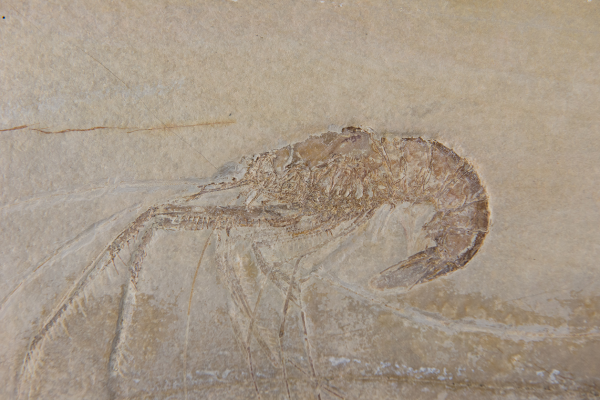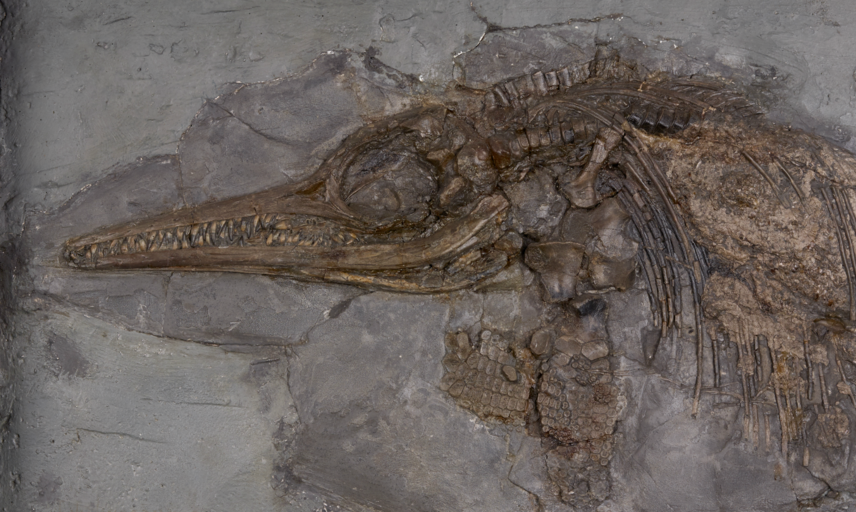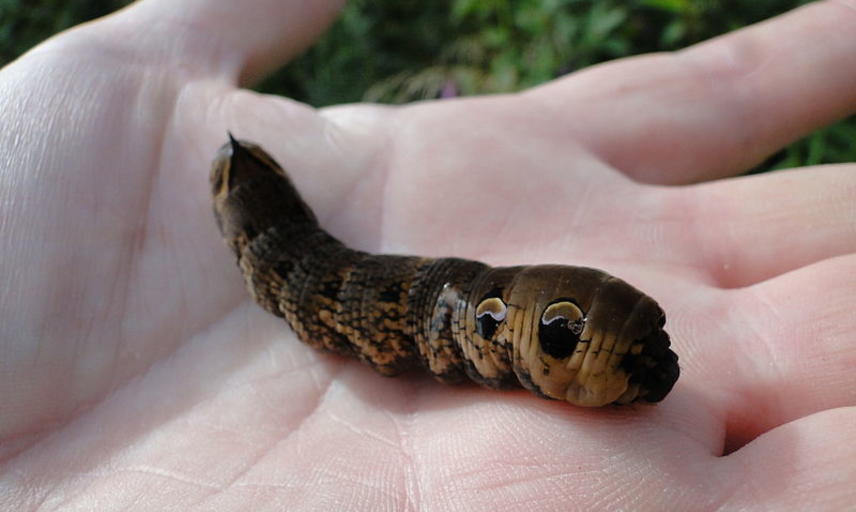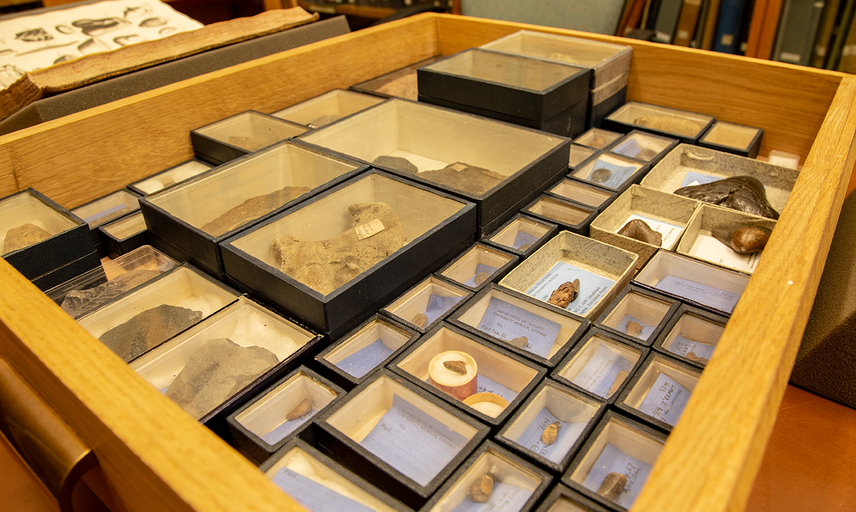Fossil invertebrates
The invertebrate palaeontology collections contain around 350,000 specimens, including over 1,000 type specimens. They cover all the major phyla: sponges, corals, bryozoans, brachiopods, molluscs, arthropods, echinoderms and graptolites, as well as enigmatic organisms that are yet to be classified. The collections range from the middle of the Ediacaran – around 575 million years ago – to the end of the Pleistocene 11,700 years ago, and contain specimens from all the Earth's continents except Antarctica.
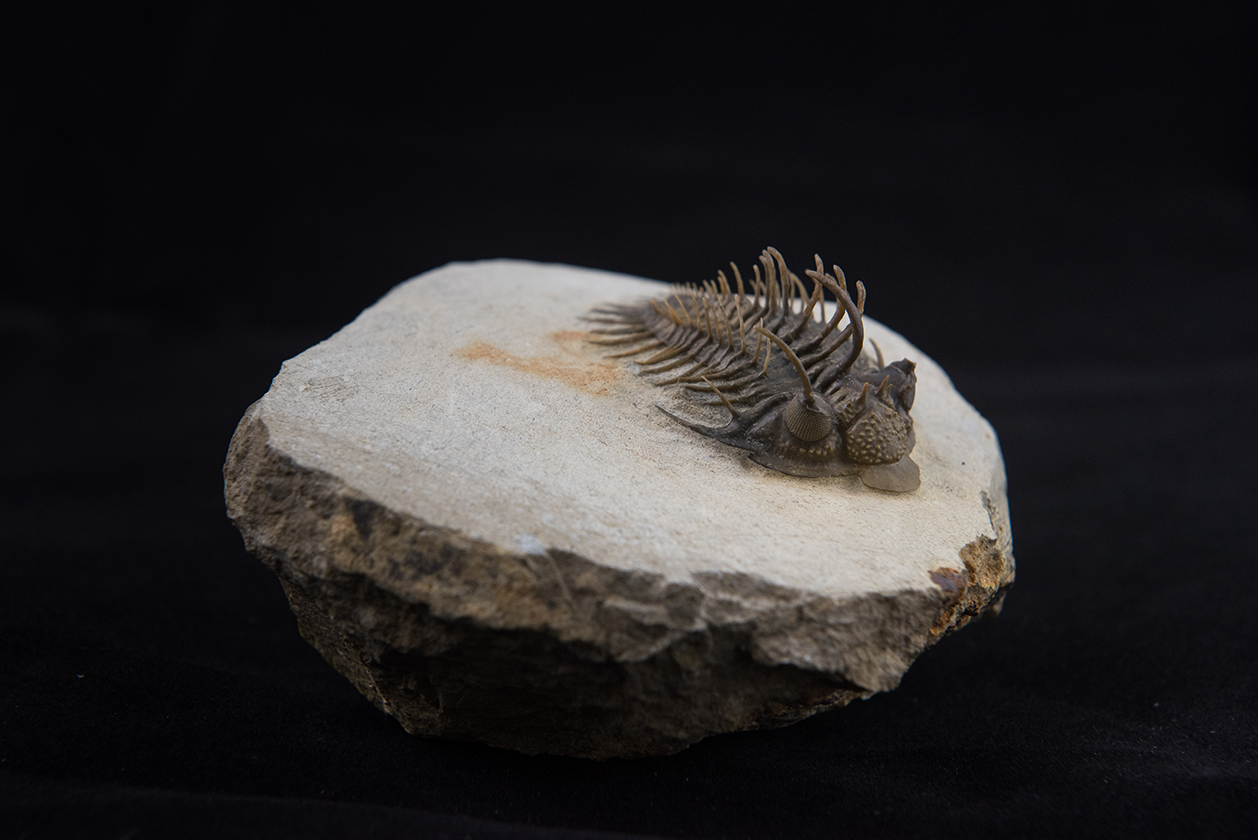
The trilobite Comura bultyncki from the Devonian of Djebel Issoumour, Morocco.
The earliest specimens to survive in the collections are those described by Edward Lhwyd, the second keeper of the original Ashmolean Museum, in his catalogue of the museum’s collections published in 1699. Other important historical collections came from William Buckland, Oxford’s first geological lecturer, and Charles Lyell, a former pupil of Buckland who went on to become a great influence on Charles Darwin. The collections are particularly strong in Mesozoic molluscs, with large collections donated by W J Arkell, John Callomon, Jim Kennedy and others.
https://sketchfab.com/models/a1ad984cf6df4a2586b0d172abce1cd0/embed?autostart=1
In recent years there has been a particular focus on specimens showing soft-tissue preservation, including material from the 525-million-year-old Chengjiang Lagerstätte and the 425-million-year-old Herefordshire Lagerstätte. The acquisition of the Martin Brasier collection in 2014 means that there are also extensive collections from around the Ediacaran-Cambrian boundary, providing a remarkable window on the early evolution of life on Earth.
Sponges
Geological range: Palaeozoic and Mesozoic sponges are well represented in our collection.
Countries of origin: The collection is representative of all continents except Africa, Australia and Antactica.
Corals
Geological range: The full geological range of brachiopods (Cambrian to Recent) is represented in our collection.
Geographical origin: The collection is representative of all continents except Australia, South America and Antactica.
Brachiopods
Geological range: The full geological range of brachiopods (Cambrian to Recent) is represented in our collection, though we currently have none from the Oligocene.
Geographical origin: The collection is representative of all continents except Antactica.
Molluscs
Geological range: The full geological range of molluscs (Cambrian to Recent) is represented in our collection.
Geographical origin: The collection is representative of all continents except Antactica.
Arthropods
Geological range: The full geological range of arthropods (Cambrian to Recent) is represented in our collection.
Geographical origin: The collection is representative of all continents except Antactica.
Echinoderms
Geological range: The full geological range of echinoderms (Cambrian to Recent) is represented in our collection.
Geographical origin: The collection is representative of all continents except Antactica.
Graptolites
Geological range: Much of the geological range of graptolites (Cambrian to Recent) is represented in our collection, though we currently have none from the Carboniferous.
Geographical origin: The collection is representative of all continents except Antactica.
Ediacaran organisms and small shelly fossils
Geological range: The full geological range of Ediacaran organisms (Ediacaran) and of small shelly fossils (Ediacaran to Cambrian) are represented in our collection.
Geographical origin: The collection is representative of all continents except Antactica.
Trace fossils
Geological range: The full geological range of trace fossils (Ediacaran to Recent) is represented in our collection.
Geographical origin: The collection is representative of all continents except Antactica.
Notable collections of fossil invertebrates include:
- Martin Brasier collection: Ediacaran fossils from the UK, Russia, Ukraine, Oman, Australia, Canada and Brazil; small shelly fossils from the UK, India, Iran, Namibia and Canada
- Cocks-Ziegler collection: Silurian brachiopods from the Welsh Borderland
- Herefordshire Lagerstätte: exceptionally preserved Silurian arthropods and other fossils from the Welsh Borderland
- John Callomon collection: Jurassic ammonites from the UK, France, Germany, Russia and India
- W.J. Arkell collection: Jurassic invertebrates from the UK and France
- Ernest Westlake collection: Cretaceous invertebrates from the UK
- Jim Kennedy collection: Cretaceous invertebrates from the UK, France, north Africa, South Africa and the USA.





